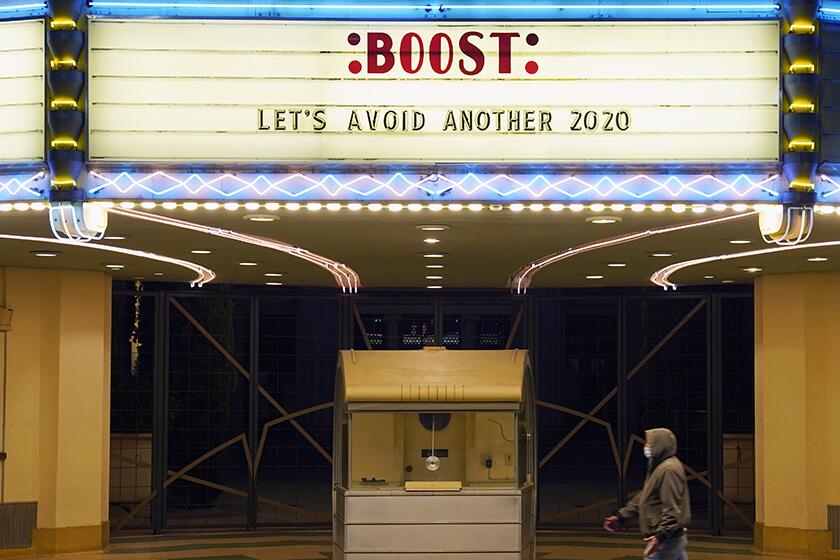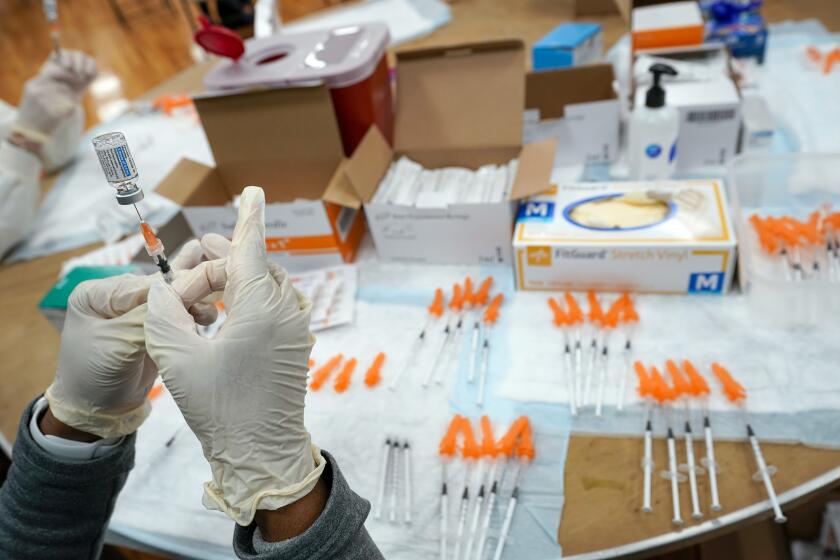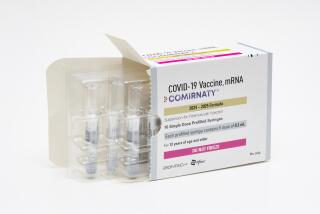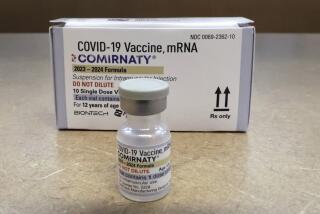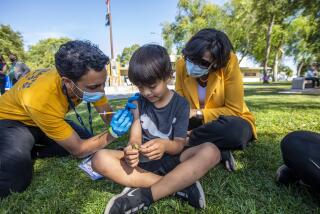U.S. rules out summer COVID boosters to focus on fall campaign
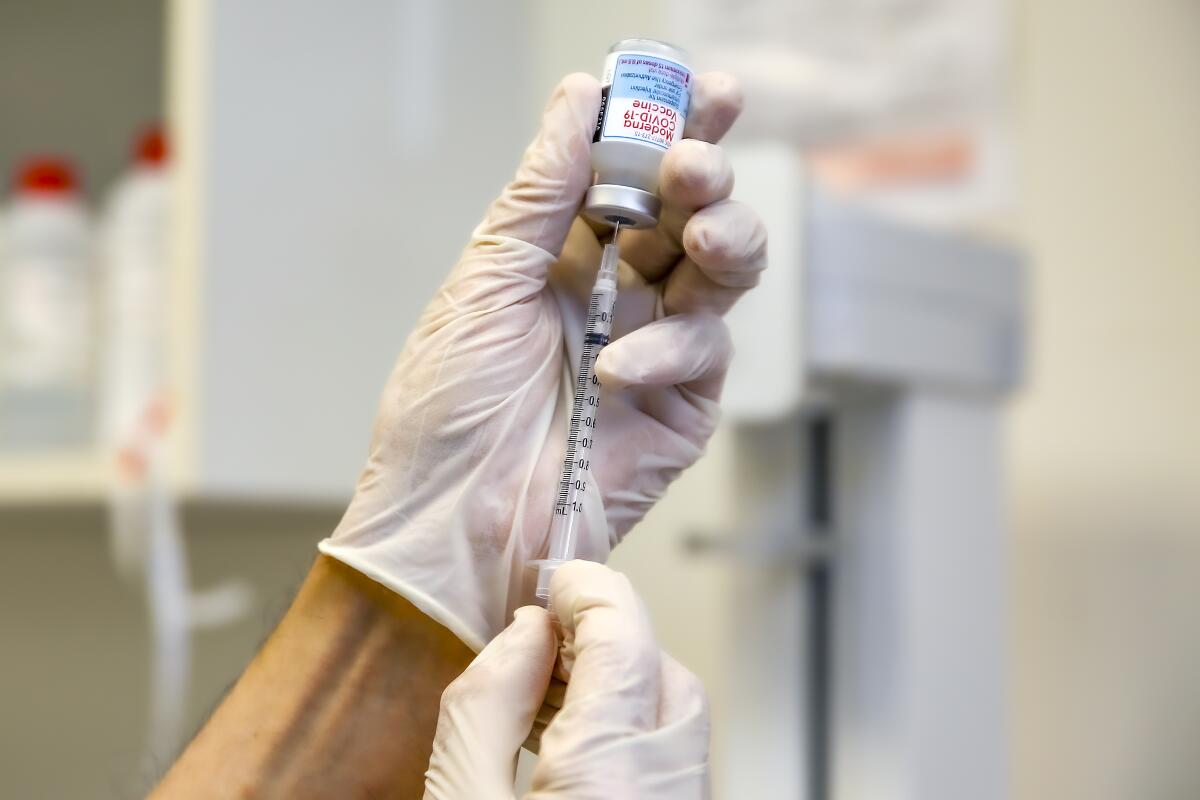
- Share via
WASHINGTON — U.S. regulators said Friday they are no longer considering authorizing a second COVID-19 booster shot for all adults under 50 this summer, focusing instead on revamped vaccines for the fall that will target the newest coronavirus subvariants.
Pfizer and Moderna expect to have updated versions of their shots available as early as September, the Food and Drug Administration said in a statement. That would set the stage for a fall booster campaign to strengthen protection against the latest versions of Omicron.
The announcement means the U.S. won’t pursue a summer round of boosters of the current vaccines for adults under 50, as some Biden administration officials and outside experts previously suggested. They had argued that another round of booster shots now could help head off rising cases and hospitalizations caused by the highly transmissible Omicron strains.
Currently, all Americans age 5 and over are eligible for a booster shot five months after their initial primary series. Fourth doses of the Pfizer or Moderna shots — a second booster — are recommended for Americans 50 and older and for younger people with serious health issues that make them more vulnerable to COVID-19.
The FDA urged eligible adults who haven’t been boosted to get their extra shot now: “You can still benefit from existing booster options and leave time to receive an updated booster in the fall,” the agency said in a statement.
The White House has also emphasized that getting a fourth dose now won’t affect anyone’s ability to get Omicron-targeted shots once they’re made available — although how long it’s been since their last dose will play a role in how soon they’re eligible.
Determining which version of the coronavirus should be used to make COVID-19 vaccines and boosters is an exercise in educated guesswork.
Two Omicron sub- variants, BA.4 and BA.5, are even more contagious than their predecessors and have pushed new daily cases above 125,000 and hospitalizations to 6,300. Those are the highest levels since February, though deaths have remained low at about 360 per day, thanks to widespread immunity and improved treatments against the virus.
The subvariants are offshoots of the strain that has been responsible for nearly all of the virus spread in the U.S. this year.
All the COVID-19 vaccines given in the U.S. until now have been based on the original version of the virus that began spreading across the country in early 2020.
In June, the FDA told the vaccine makers that any boosters for the fall would have to combine protection against Omicron BA.4 and BA.5 as well as the original coronavirus strain. Both manufacturers have been speeding their production and data gathering to have those so-called bivalent vaccines ready for the fall.
The FDA and the Centers for Disease Control and Prevention would have to sign off on revamped shots before their launch.
The U.S. has a contract to buy 105 million doses of the Pfizer combination shots once they’re ready, along with 66 million of Moderna’s version. But how soon large amounts would become available isn’t clear.
U.S. regulators are telling COVID-19 vaccine makers to tweak any booster doses intended for fall so they protect against the newest versions of Omicron.
As for timing, getting a booster too soon after the previous dose means missing out on its full benefit — something policymakers will have to take into consideration when rolling out revamped shots.
The White House has at times been frustrated by the pace of decision-making at the FDA and CDC, most notably last summer, when the regulators took weeks to decide whether to authorize the first booster dose for adults. Privately, West Wing officials believe the delay cost lives, preventing optimum protection amid the Delta and Omicron surges and feeding doubts about vaccine effectiveness that affected their uptake.
Some of those frustrations have bubbled up again as regulators considered whether to recommend a fourth shot for all adults, not just those at highest risk from the virus. Some in the White House believe that the additional dose would help somewhat with the rapidly spreading BA.5 subvariant and also lift the confidence of anyone worried that protection has waned.
Still, officials across the government have acknowledged the risks of vaccine fatigue among Americans, including tens of millions who still haven’t received their first booster. Government figures show less than half of those eligible for a booster have gotten that third shot.
Associated Press writer Zeke Miller contributed to this story from Washington.
